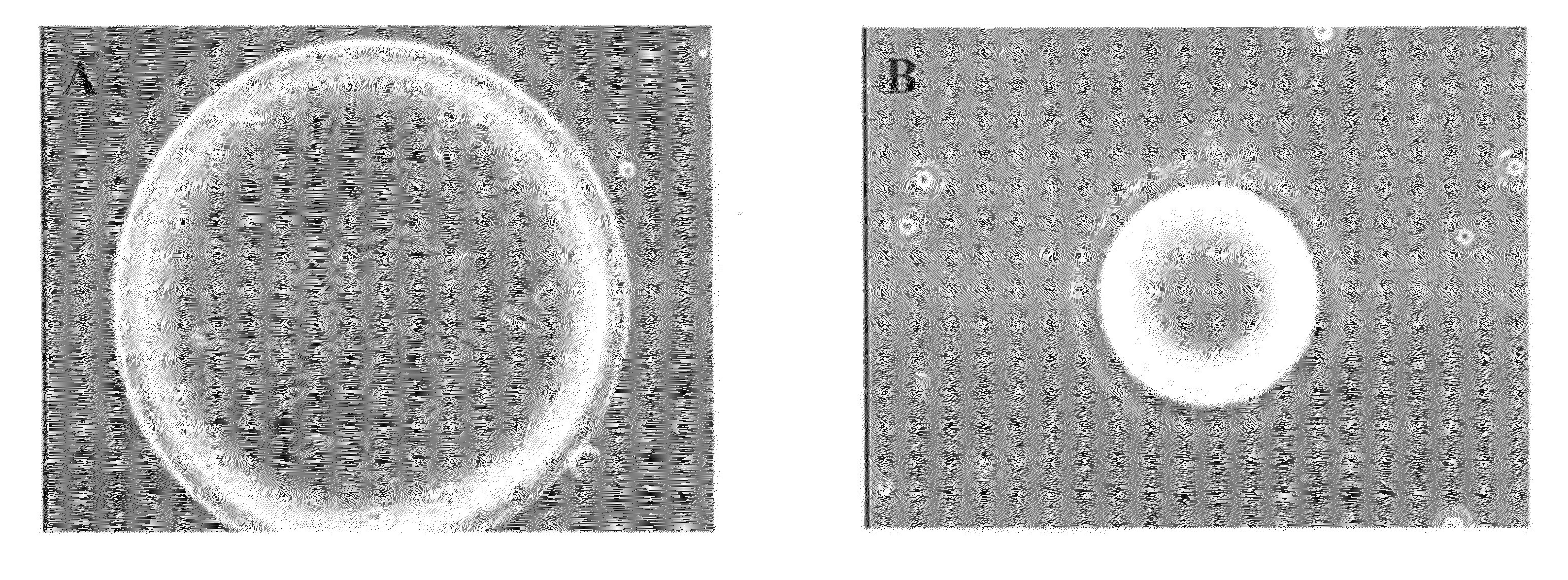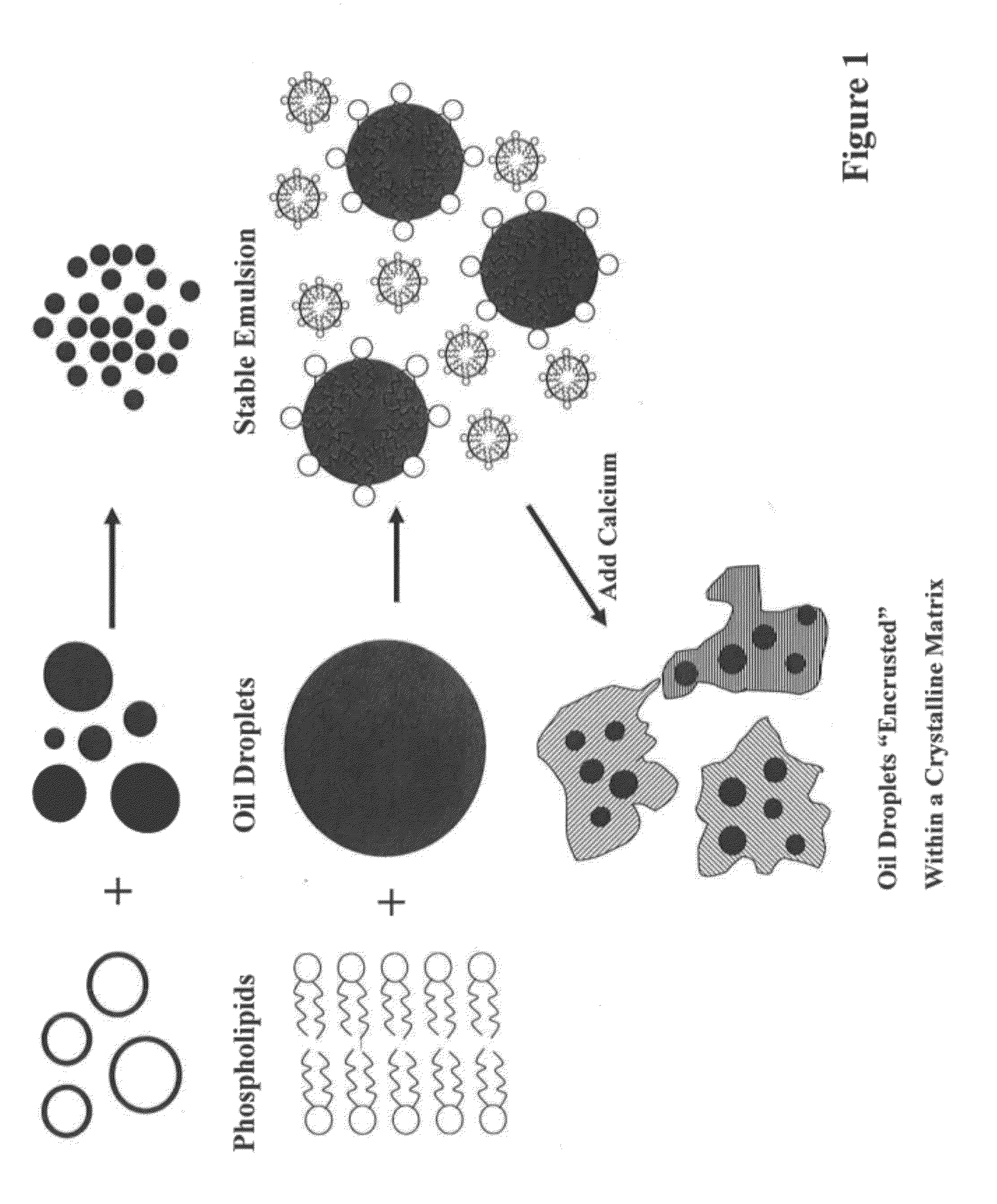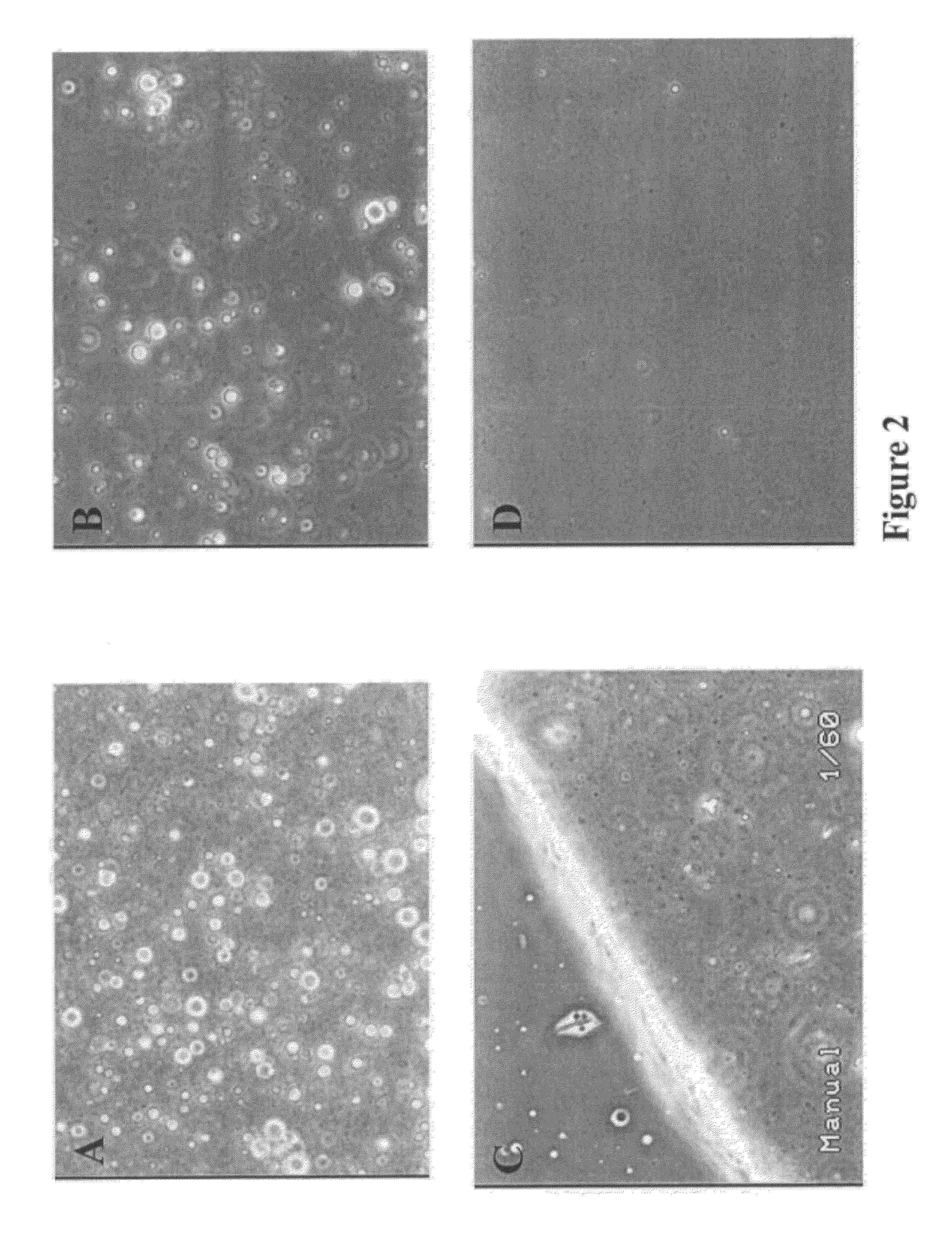Geodate delivery vehicles
a technology of geodate and vesicles, which is applied in the direction of granular delivery, dna/rna fragmentation, peptide/protein ingredients, etc., can solve the problems of limited amount of active compound that can be incorporated into the lipid bilayer, the casting method cannot be scaled up to accommodate large batches, and the difficulty of incorporating sufficient quantities of active compound into the vesicles
- Summary
- Abstract
- Description
- Claims
- Application Information
AI Technical Summary
Benefits of technology
Problems solved by technology
Method used
Image
Examples
example 1
A Lipid Monolayer Preparation of a Cargo Moiety
[0137]In a first vessel, a hydrophobic composition was prepared by vortexing dried Amphotericin B (fungal agent) and rhodamine (a fluorescent marking agent) with olive oil until the amphotericin and the rhodamine were integrally mixed with the olive oil. In a separate vessel, dried lipid was vigorously mixed in water to obtain a suspension of liposomes in water. The hydrophobic composition was then added to two portions of the liposome suspension in lipid-to-oil ratios of about 10:1 and about 5:1, and vigorously mixed to form stable emulsions. Inspection of both emulsions under a microscope revealed the formation of the hydrophobic composition encapsulated with a lipid monolayer and liposomes (FIGS. 2A-D, 3A-B and 4 depict similar emulsions). The emulsions were stable and the hydrophobic domain did not coalesce. Such a stable emulsion is illustrated in FIG. 1, wherein the stable emulsion includes geodate delivery vehicles that include l...
example 2
Lipid Monolayer Preparation Cargo Moiety Trapped in a Lipid Strata
[0138]Calcium was added to the emulsions of Example 1. A crystalline structure was observed to form about the lipid monolayer. The crystalline structure is believed to include the calcium and liposomes. Each crystal enveloped several encapsulated hydrophobic domain as depicted schematically in FIG. 1. (FIGS. 5 and 6 depict similar structures).
example 3
Release of Lipid Monolayer Preparation from Strata
[0139]EDTA was added to the emulsion of Example 2. The crystal structure was observed to deteriorate such that the encapsulated domain remained, no longer encrusted by the crystalline structure. (FIGS. 7 and 8 depict similar emulsions).
PUM
| Property | Measurement | Unit |
|---|---|---|
| temperatures | aaaaa | aaaaa |
| total volume | aaaaa | aaaaa |
| temperatures | aaaaa | aaaaa |
Abstract
Description
Claims
Application Information
 Login to View More
Login to View More - R&D
- Intellectual Property
- Life Sciences
- Materials
- Tech Scout
- Unparalleled Data Quality
- Higher Quality Content
- 60% Fewer Hallucinations
Browse by: Latest US Patents, China's latest patents, Technical Efficacy Thesaurus, Application Domain, Technology Topic, Popular Technical Reports.
© 2025 PatSnap. All rights reserved.Legal|Privacy policy|Modern Slavery Act Transparency Statement|Sitemap|About US| Contact US: help@patsnap.com



